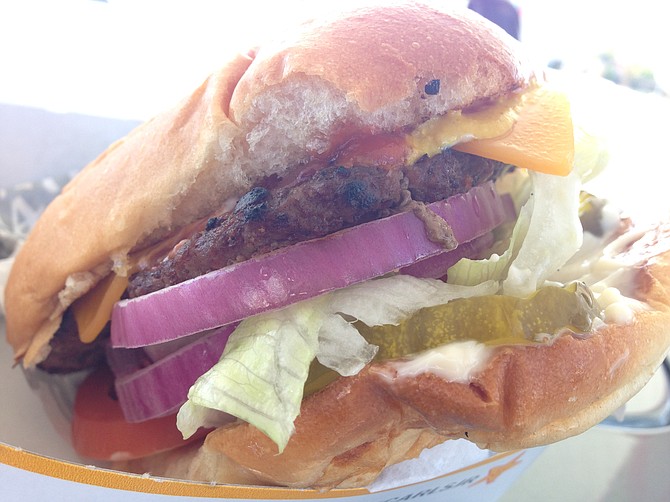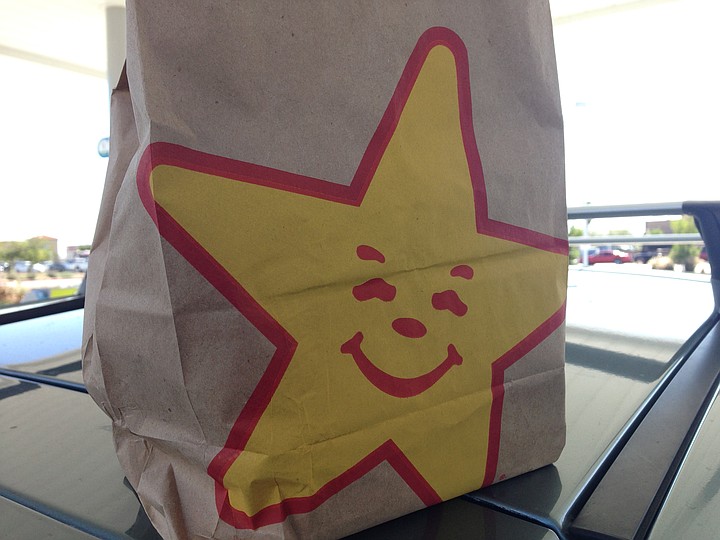 Facebook
Facebook
 X
X
 Instagram
Instagram
 TikTok
TikTok
 Youtube
Youtube

The end of August marks 20 years since I’ve bought or eaten anything from McDonald’s, a boycott stemming partly from politics, partly revulsion, and mostly by the lack of nutrition of the chain’s cheap foodstuffs that are marketed heavily to children.
That said, I do on rare occasion visit other fast-food chains, usually out of desperation or time mismanagement, and it’s most often instantly regretted. But when Carl’s Jr. released a new burger earlier this year, it caught my attention. Carl’s touts the All-Natural Burger as 100% beef, a disturbingly rare claim among fast-food giants. Better yet, they declare this burger grass fed and free of hormones, steroids, and antibiotics.

After so many years railing against fast-food chains for serving trash wrapped in more trash, here was one stepping up to the plate with a burger designed to appeal to my progressive foodsnob principles. I’m not saying I jumped at the chance to try it, but when the time came, and I needed a quick lunch fix near a highway exit, Carl’s and its grass-fed burger fit the bill.
I opted for the $4.69 single patty burger because I wasn’t ready to commit to something larger. Also, since part of the point was supporting the idea of a quasi-healthy menu upgrade, I also opted for the $2.69 zucchini fries over potato. I’ve noticed this side dish in a few burger places recently, and it’s never good. So it was no surprise that I didn’t want to finish these zucchini fries, however much ranch dressing they threw at me.
But for the burger I had high hopes. It didn’t actually look too different from a regular Carl’s patty — thin. But it had some char marks and was dressed with fresh onions, tomatoes, and lettuce, plus some chunky pickles and a thick cut of cheddar. The bun looked slightly better than the standard fast-food bun.
The burger was also heavily slathered in mayo, mustard, and ketchup. These proved its downfall.
The patty had a nice enough char-grilled flavor, and going for that second patty might have improved things. But the condiments were so sugary sweet that I literally had to eat the beef separately to get an idea of its (relative) quality. I can only see this as a sort of tone deafness on Carl’s Jr.’s part. Here they are trying to appeal to idiots like me who would love nothing more than to find a reputable, responsibly sourced burger on the fly, and yet they load it up with exactly the kind of useless sugar intake customers drawn to a grass fed burger want to avoid.
Am I surprised? Of course not. I just hope that when their sales figures tell them this heavily marketed burger is a disappointment, they don’t blame it on grass-fed beef. Worse, if it succeeds I hope they don’t give all the credit to sugar.


The end of August marks 20 years since I’ve bought or eaten anything from McDonald’s, a boycott stemming partly from politics, partly revulsion, and mostly by the lack of nutrition of the chain’s cheap foodstuffs that are marketed heavily to children.
That said, I do on rare occasion visit other fast-food chains, usually out of desperation or time mismanagement, and it’s most often instantly regretted. But when Carl’s Jr. released a new burger earlier this year, it caught my attention. Carl’s touts the All-Natural Burger as 100% beef, a disturbingly rare claim among fast-food giants. Better yet, they declare this burger grass fed and free of hormones, steroids, and antibiotics.

After so many years railing against fast-food chains for serving trash wrapped in more trash, here was one stepping up to the plate with a burger designed to appeal to my progressive foodsnob principles. I’m not saying I jumped at the chance to try it, but when the time came, and I needed a quick lunch fix near a highway exit, Carl’s and its grass-fed burger fit the bill.
I opted for the $4.69 single patty burger because I wasn’t ready to commit to something larger. Also, since part of the point was supporting the idea of a quasi-healthy menu upgrade, I also opted for the $2.69 zucchini fries over potato. I’ve noticed this side dish in a few burger places recently, and it’s never good. So it was no surprise that I didn’t want to finish these zucchini fries, however much ranch dressing they threw at me.
But for the burger I had high hopes. It didn’t actually look too different from a regular Carl’s patty — thin. But it had some char marks and was dressed with fresh onions, tomatoes, and lettuce, plus some chunky pickles and a thick cut of cheddar. The bun looked slightly better than the standard fast-food bun.
The burger was also heavily slathered in mayo, mustard, and ketchup. These proved its downfall.
The patty had a nice enough char-grilled flavor, and going for that second patty might have improved things. But the condiments were so sugary sweet that I literally had to eat the beef separately to get an idea of its (relative) quality. I can only see this as a sort of tone deafness on Carl’s Jr.’s part. Here they are trying to appeal to idiots like me who would love nothing more than to find a reputable, responsibly sourced burger on the fly, and yet they load it up with exactly the kind of useless sugar intake customers drawn to a grass fed burger want to avoid.
Am I surprised? Of course not. I just hope that when their sales figures tell them this heavily marketed burger is a disappointment, they don’t blame it on grass-fed beef. Worse, if it succeeds I hope they don’t give all the credit to sugar.
Comments